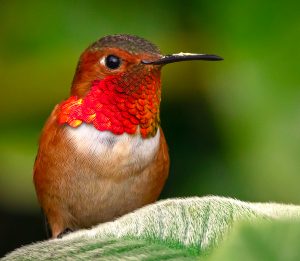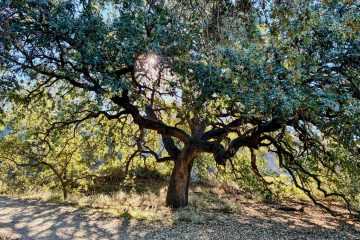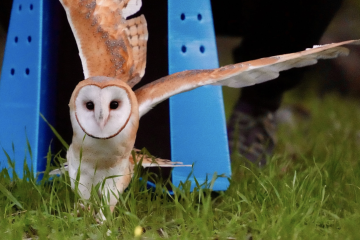Hummingbird expert Dr. Julie Morley explains how you can help these tiny birds—view her recorded webinar presentation here

Dr. Julie Morley shared her knowledge and advice about how to help protect our native Conejo Valley hummingbirds on May 1 as COSF’s first 2024 Speaker Series guest. Entitled “Helping Hummingbirds: Let’s Make the Future Bright,” the talk focused on understanding hummingbirds’ biology and habits so attendees can cultivate safer and more welcoming habitats for them.
Scroll about 2/3 of the way down this page to view the video recording of her presentation.
Dr. Morley received her PhD in Multispecies Studies and her MA in Transformative Leadership from the California Institute of Integral Studies. She has photographed and documented hummingbirds for many years and shared her beautiful images, including Allen’s, Anna’s, Costa’s and rufous native hummingbirds. (Both the Allen’s and rufous species populations are in severe decline.)
Among the astonishing hummingbird facts Dr. Morley covered:
- Hummingbirds visit up to 2,000 flowers per day.
- They need to feed every 10 to 15 minutes to sustain their high metabolisms (the equivalent of 150,000 calories a day in humans).
- Although flower nectar is important, 80 percent of their diet is bugs, including mosquitoes.
- Their tiny feet are only suited for perching; they cannot walk.
- They can fly backwards. No other bird can.
- They are tetrachomats, meaning they can see a range of colors invisible to humans.
Dr. Morley noted multiple ways you can help. These include:
- Make sure you always have something blooming. In addition to native plants, nonnatives such as agaves, beebalm, butterfly bush, lantana, all sages and trumpet vine are good.
- Keep feeders clean! When temperatures exceed 85 degrees, that means cleaning daily.
- Look before you prune. Many tiny nests are lost to spring pruning; defer pruning to later in the year, if possible.
- Do not assume a motionless hummingbird is dead; it may be in torpor, a kind of hibernation. Don’t touch it and let it warm up.
- Keep pet cats inside or in an outdoor catio.
- Protect and advocate for open space.
Dr. Morley is the founder of Multispecies Media, a nonprofit that seeks to educate people about the importance of coexistence with other species. She is also the author of Future Sacred: The Connected Creativity of Nature. Her Instagram account, @juliejmorley, features her photography of hummingbirds.
Special thanks to our event sponsor, Wild Birds Unlimited. Please visit them in Thousand Oaks for all your feeder needs! And thank you to our series sponsor, The City of Thousand Oaks.
View the video recording here:
Resources
For help with injured or stranded hummingbirds
Instagram: @venturahummingbirdrescue; (805) 320-2438
How to care for feeders and plant for hummingbirds
https://www.audubon.org/community-science/hummingbirds/how-create-hummingbird-friendly-yard
To hear the sounds of our native hummingbird species
Allen’s (display)
https://macaulaylibrary.org/asset/110935
Anna’s (song)
https://macaulaylibrary.org/asset/197952
Rufous (display)
https://macaulaylibrary.org/asset/109124
Costa’s (display)





0 Comments